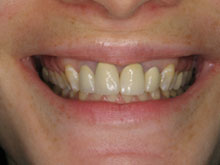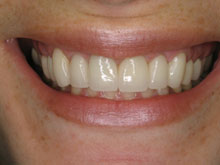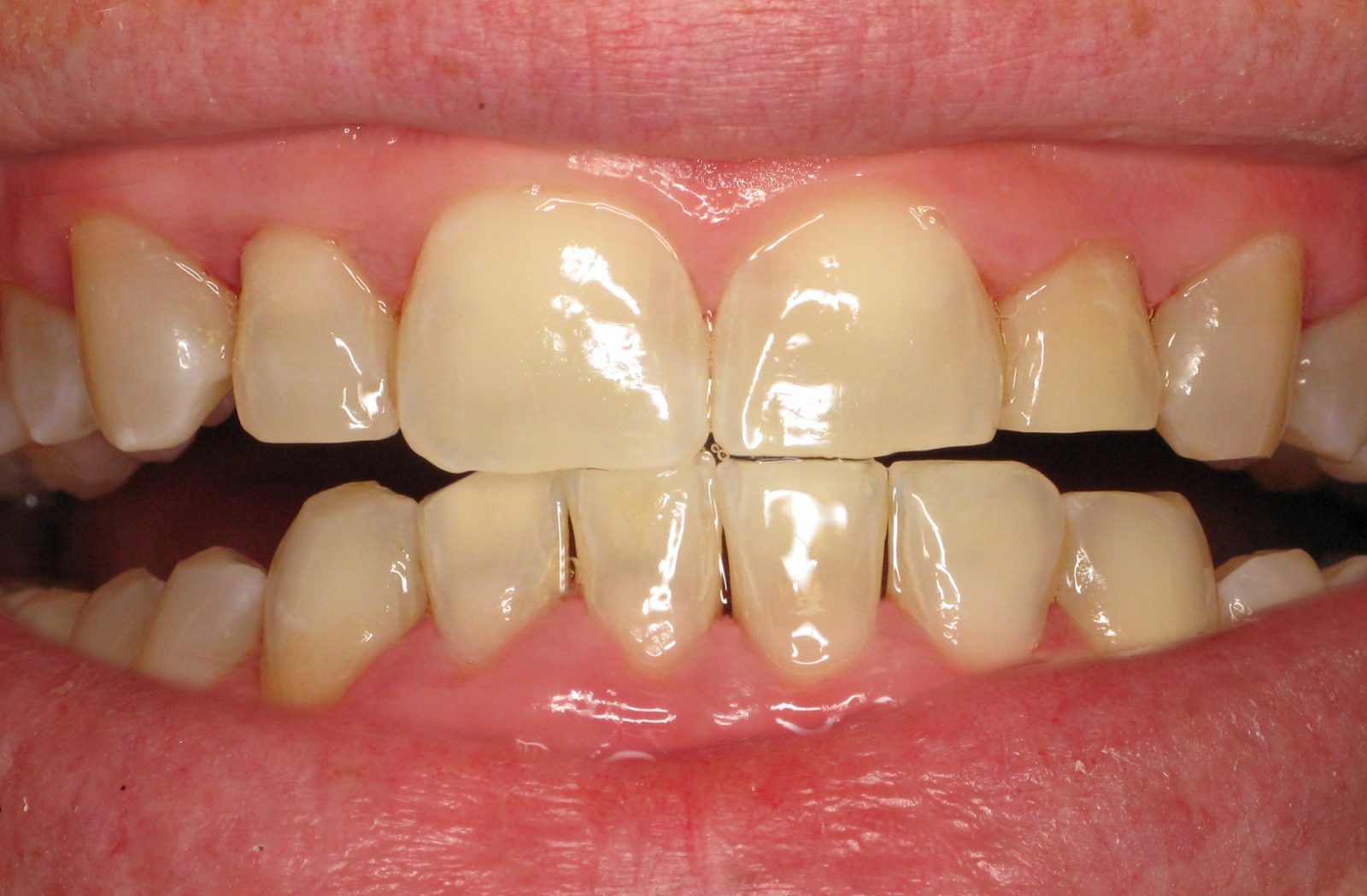How is Bad Breath Treated In Gum Disease?

Addressing bad breath involves a multifaceted approach, and the selection of treatment options depends on the underlying causes identified through thorough diagnostic assessments. At Laser Periodontics & Gum Surgery, we understand that effective treatment for bad breath goes beyond symptom management, aiming to eliminate the root causes.
Our comprehensive approach includes personalized oral care plans tailored to each individual’s unique needs. Treatment options may encompass professional dental cleanings, scaling, and root planing to address gum disease, antimicrobial therapies, and patient education on optimal oral hygiene practices.
By combining advanced techniques, such as laser periodontics, with evidence-based methodologies, we strive to provide lasting solutions that alleviate bad breath and promote overall oral health and well-being. Our specialists at Laser Periodontics & Gum Surgery are committed to delivering individualized care to ensure fresh breath and a healthy oral environment for all our patients—call (877) 440-3564 to schedule a consultation with one of our experienced specialists.
What treatment options are available to address bad breath caused by gum disease?
The treatment options for bad breath, or halitosis, are diverse and depend on the underlying causes identified during diagnostic assessments. At Laser Periodontics & Gum Surgery, our specialists offer a range of comprehensive treatment options to address bad breath effectively:
Professional Dental Cleanings:
- Procedure: Regular professional cleanings involve the removal of plaque and tartar buildup on teeth surfaces and along the gumline.
- Purpose: By eliminating bacterial deposits, professional cleanings help reduce the source of malodorous compounds and create a healthier oral environment.
Scaling and Root Planing:
- Procedure: Scaling and root planing, also known as deep cleaning, target removing plaque and calculus from below the gum line and smoothing the tooth roots.
- Purpose: This procedure is particularly beneficial for individuals with gum disease, as it addresses the deep pockets where bacteria thrive, contributing to bad breath.
Antimicrobial Therapies:
- Prescription Mouthwashes: Specialized mouthwashes containing antimicrobial agents may be prescribed to target and reduce the bacterial load in the oral cavity.
- Purpose: These mouthwashes help control bacterial growth, improving breath freshness.
Tongue Cleaning:
- Procedure: Regularly clean the tongue using a tongue scraper or toothbrush.
- Purpose: Bacteria can accumulate on the tongue’s surface, contributing to bad breath. Cleaning the tongue helps reduce bacterial colonization.
Saliva Stimulation:
- Chewing Gum or Lozenges: Sugar-free gum or lozenges can stimulate saliva production, aiding in the mouth’s natural cleansing.
- Purpose: Increased saliva flow helps neutralize acids, wash away bacteria, and maintain an optimal oral environment.
Oral Hygiene Education:
- Individualized Instruction: Patient education on proper brushing, flossing, and oral hygiene practices tailored to the individual’s needs.
- Purpose: Empowering individuals with effective oral care techniques ensures ongoing bad breath prevention.
Treatment of Underlying Issues:
- Gum Disease Management: When gum disease is identified as a contributing factor, specific periodontal treatments, including laser periodontics, may be recommended.
- Purpose: Addressing the root cause of bad breath involves managing and treating conditions such as gingivitis or periodontitis.
Nutritional Guidance:
- Dietary Recommendations: Guidance on nutritional choices that may contribute to bad breath and food recommendations that promote oral health.
- Purpose: A balanced diet supports overall health and helps prevent bad breath associated with certain foods.
Regular Dental Check-ups:
- Routine Appointments: Regular dental visits for check-ups and cleanings.
- Purpose: Continuous monitoring and preventive care ensure early detection and management of any emerging oral health issues contributing to bad breath.
At Laser Periodontics & Gum Surgery, our specialists tailor treatment plans based on the individual’s specific needs and the underlying causes of bad breath. This comprehensive approach aims to provide immediate relief and establish long-term oral health and fresh breath for our patients.
How do professional dental cleanings help in reducing bad breath?
Professional dental cleanings play a pivotal role in reducing bad breath by addressing the primary source of oral malodor: the accumulation of plaque and tartar. During a professional dental cleaning, a skilled dental hygienist utilizes specialized instruments to thoroughly remove plaque, a sticky film of bacteria, and tartar, the hardened form of plaque, from tooth surfaces and along the gumline.
If left unchecked, these deposits harbor bacteria that release malodorous compounds contributing to bad breath. The cleaning process extends below the gumline, targeting areas that are challenging to reach with regular oral hygiene practices. By effectively eliminating these bacterial deposits, professional cleanings provide immediate relief from bad breath and create a clean and healthier oral environment.
Additionally, removing calculus helps prevent gum disease progression, further contributing to sustained breath freshness. Regular professional dental cleanings, typically recommended every six months, are a cornerstone of preventive oral care, promoting optimal oral health and preventing the recurrence of bad breath.
What role do scaling and root planing play in treating bad breath due to gum issues?
Scaling and root planing, commonly known as a deep cleaning procedure, are crucial in treating bad breath associated with gum issues, particularly gum disease. Here’s an in-depth look at the role of scaling and root planing in addressing halitosis:
Plaque and Tartar Removal:
- Procedure: Scaling involves the removal of accumulated plaque and tartar from the tooth surfaces, especially below the gumline.
- Role: Plaque is a bacterial biofilm that, when not effectively removed, releases malodorous compounds contributing to bad breath. Scaling eliminates these deposits, addressing a significant source of oral malodor.
Deeper Cleaning for Periodontal Pockets:
- Procedure: Root planing focuses on smoothing the surfaces of the tooth roots, particularly in deep periodontal pockets formed in advanced gum disease.
- Role: Periodontal pockets are spaces between the teeth and gums where bacteria thrive, causing inflammation and contributing to bad breath. Root planing removes bacterial deposits, promoting healing and reducing the depth of pockets.
Bacterial Reduction:
- Procedure: Both scaling and root planing aim to reduce the bacterial load in the oral cavity.
- Role: By eliminating bacteria below the gum line, these procedures create an environment less conducive to producing malodorous compounds, addressing the root cause of bad breath.
Gum Disease Management:
- Procedure: Scaling and root planing are fundamental to gum disease management.
- Role: By treating and managing gum disease, these procedures contribute to the resolution of inflammation and bleeding and the reduction of periodontal pockets, collectively alleviating bad breath.
Promotion of Gum Healing:
- Procedure: Root planing helps heal the gum tissues by promoting their reattachment to the tooth roots.
- Role: As the gums heal, they become less prone to bleeding, inflammation, and bacterial infiltration, improving breath freshness.
Prevention of Disease Progression:
- Procedure: Scaling and root planing help prevent the progression of gum disease to more advanced stages.
- Role: By addressing the early signs of gum disease, these procedures play a preventive role, ensuring that the condition does not exacerbate and that bad breath does not worsen over time.
Essentially, scaling and root planing are integral components of a comprehensive treatment strategy for gum-related bad breath issues. These procedures go beyond surface cleaning, targeting the deep-seated bacterial deposits contributing to gum disease and malodorous breath. When performed by skilled dental professionals, scaling and root planing effectively contribute to a healthier oral environment, reduced inflammation, and sustained breath freshness.
Are there specific mouth rinses or oral products that alleviate bad breath in gum disease?

Several specific types of mouthwash and oral products are designed to alleviate bad breath associated with gum disease, providing targeted solutions for individuals seeking relief. Antimicrobial mouthwashes containing active ingredients such as chlorhexidine, cetylpyridinium chloride, or essential oils like eucalyptus and tea tree oil can be highly effective. These ingredients reduce the oral cavity’s bacterial load, particularly in hard-to-reach areas and periodontal pockets where gum disease bacteria thrive.
Additionally, mouthwashes with fluoride can help strengthen enamel and prevent cavities, addressing potential contributors to bad breath. It’s essential to choose alcohol-free mouthwashes to avoid potential drying of oral tissues, as a dry mouth can exacerbate bad breath. Some products are specifically formulated for gum health, combining antibacterial agents with soothing ingredients to promote healing.
However, it’s crucial to use these products as directed and in conjunction with a comprehensive oral care routine, including regular professional cleanings and periodontal treatments, for optimal effectiveness in alleviating bad breath associated with gum disease. Consulting with a dental professional can help individuals identify the most suitable products based on their oral health needs.






